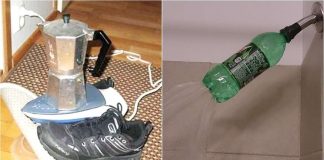Whilst losing body fat should be quite straightforward, it never seems to be that way. If you do a quick google search or flick through any fitness magazines, you’ll find all sorts of information on what the ‘best’ way to lose body fat is. Some sites will state that you need to avoid carbohydrates at all costs and that if you even look at a slice of bread you’re going to gain 50lbs. Others state that it’s artificial sweeteners and processed products. Some even say that anything other than fruit is the root cause of obesity. With all this conflicting information, it can be tricky trying to work out what the right answer is.
However, dropping pounds isn’t as hard as you might think it to be. Once you understand the fundamental processes of how our body chooses to lose and gain fat, the act of altering your body composition becomes a lot simpler.
So, the age-old adage of ‘eat less, move more’ is correct, but there’s some extra information to it. The overriding factor that determines whether our body gains or loses fat is dependent on the calories we consume versus the calories we burn. If we eat more calories than we burn, then we gain weight, and if we burn more calories than we eat, then we lose weight. Yet, weight doesn’t always correlate to fat which is why it’s important to eat the right foods and train the right way. If we only take into context our calories and nothing else, then we can put on a large amount of fat whilst trying to gain muscle or lose a large amount of muscle when trying to lose fat. In order to get our body looking exactly how we want to, we need to take into account calories as well as some other factors.
The next most important factor in terms of diet is going to be protein. Protein helps to promote lean muscle tissue and preserve muscle mass when losing weight. As well as this, it’s joint with carbohydrates for containing the lowest amount of calories per gram and comes out tops in terms of satiety. This means that you’ll feel more full on lower calories, helping to keep you in a deficit.
When it comes to fats and carbs, the amount you eat comes down to your particular preference. If you eat more fat, then you’ll need to eat fewer carbs and vice versa. However, keep in mind that has 9 calories per gram whereas carbs contain 4 calories per gram, less than half that of fat.
Now, this might seem like a lot to take in, but it’s actually quite easy to fit into your daily routine with some top tips.
1. Aim to eat a protein and fibre source with every meal as well as a serving of either fruit or veg.
2. Eat natural, healthy food 80% of the time and save 20% for less healthy items.
3. The predominant source of your fats and carbohydrates should come from natural sources (potatoes, fruit, whole grains, olives, coconut, nuts, seeds, etc.).
4. Drink plenty of water (one glass with and between each meal).
5. Look into possible supplements that you may help your progress; protein shakes, bcaa powders and hcg.
If you follow those four steps and stay consistent, then you’re guaranteed to drop fat. If you step on the scale and don’t see any difference, then slightly reduce your fat and/or carbohydrate intake such as by swapping rice to cauliflower rice or using less oil during cooking.
Obviously, diet isn’t the whole story when it comes to fat loss. Training is also a large factor as you not only need to burn calories, but also improve your strength and physical capabilities in order for your body to feel as good as it looks.
When it comes to exercise, you don’t need to do as much as you probably think. Some exercise routines will have you sweating and puking up your guts 6-7 days per week, but in reality, 3-4 sessions is all it takes. As previously mentioned, calories are the overriding factor behind weight loss and weight gain. Yet, it’s much easier to simply not eat the calories in the first place than it is to try and burn them off in the gym. Therefore, the emphasis of your diet should be on fat loss whilst the emphasis on exercise should be performance.
A common mistake that people make is to place so much emphasis on losing weight that when the fat’s gone, they have no muscle to make up their frame. This means that you won’t have the body you most likely want or the best body you could have. To combat this, you should try to gain strength in the gym and improve your capabilities with main lifts. There are six essential lifts for any gym goer which altogether hit every muscle in your body from almost every angle. These movements are the squat, deadlift, overhead press, bench press, bent over row, and lat-pulldown/pull-up. The rest of your session should be comprised of targeting muscles that you specifically want to grow. For instance, women tend to want to grow their glutes and legs whilst men want to grow their arms, shoulders, chest, and back. Depending on what area you want to build, you would then do 3-4 other exercises which hit these to increase the stimulus in the muscle and overall volume of the workout.
But what about cardio? The last thing you want to do when changing your body composition is to do too much at once as this will not only leave you drained but also give you no tools for when you hit a plateau. Instead of dropping your calories and going hard with cardio at the start, you should instead leave cardio for when your weight loss starts to stall. When beginning to lose weight, simply focus on eating better and improving your performance in the gym, then when you need to do cardio, start with just one or two 30 minute sessions per week. This should be enough to kick-start your weight loss again. If it stalls once more, then up the sessions to 45 minutes or introduces another 30-minute session. These bouts of cardio can either be done after your workout or on your rest days.
So, that’s really all there is to it. Following the 80/20 rule with your diet allows for you to continue dropping fat whilst also allowing you to eat some foods which may cause cravings. Many people don’t realise that the key to a successful diet is not just weight loss, but also, longevity. If you can’t see yourself continuing this lifestyle into the future, then it’s ultimately going to fail and you’re going to be back where you started. Aim to teach yourself new things such as exciting recipes or fun workout routines that you can repeat again and again. Couple this with some patience and dedication and before you know it, you’ll be exactly at your goal.





